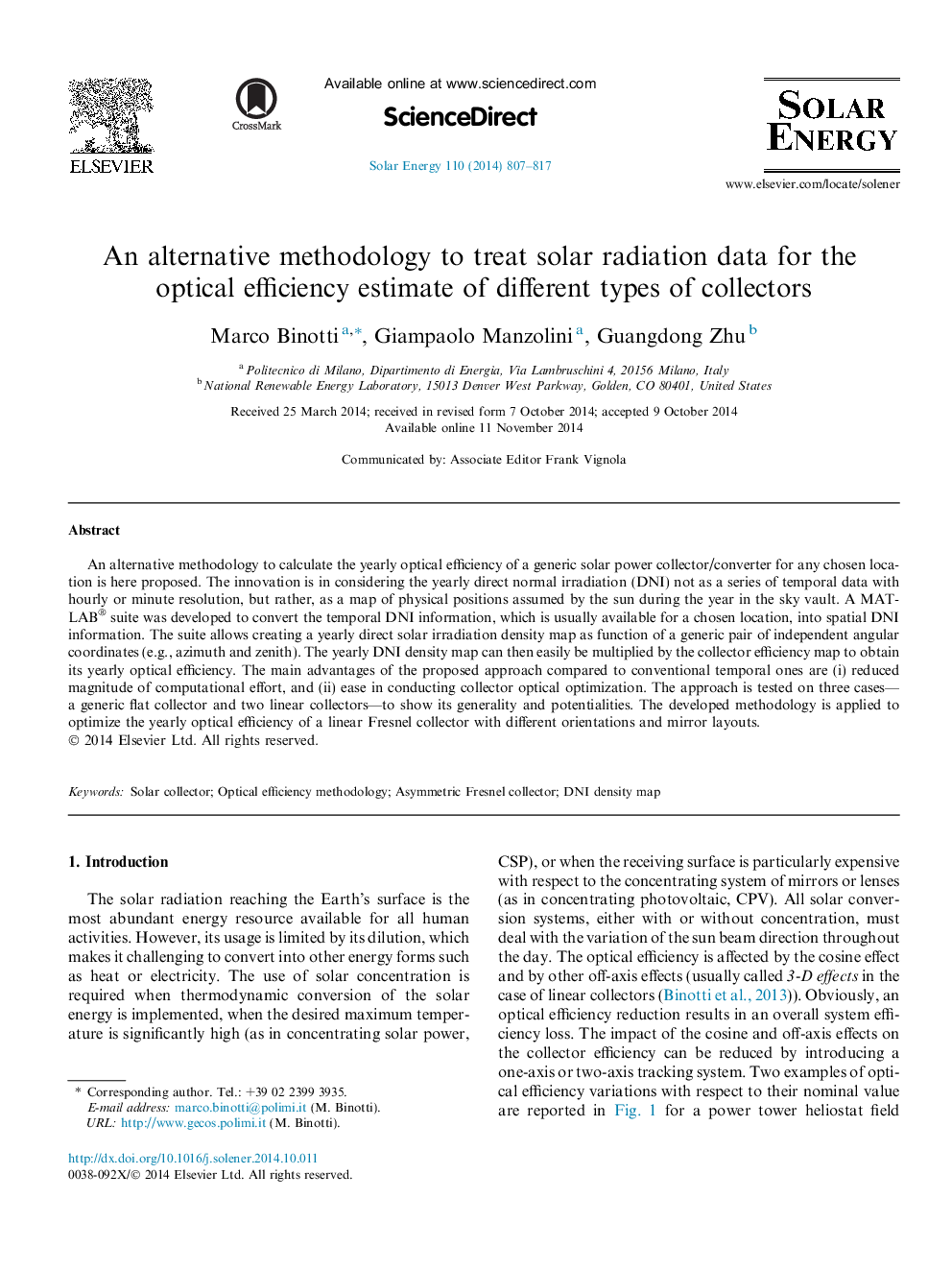| Article ID | Journal | Published Year | Pages | File Type |
|---|---|---|---|---|
| 7938262 | Solar Energy | 2014 | 11 Pages |
Abstract
An alternative methodology to calculate the yearly optical efficiency of a generic solar power collector/converter for any chosen location is here proposed. The innovation is in considering the yearly direct normal irradiation (DNI) not as a series of temporal data with hourly or minute resolution, but rather, as a map of physical positions assumed by the sun during the year in the sky vault. A MATLAB® suite was developed to convert the temporal DNI information, which is usually available for a chosen location, into spatial DNI information. The suite allows creating a yearly direct solar irradiation density map as function of a generic pair of independent angular coordinates (e.g., azimuth and zenith). The yearly DNI density map can then easily be multiplied by the collector efficiency map to obtain its yearly optical efficiency. The main advantages of the proposed approach compared to conventional temporal ones are (i) reduced magnitude of computational effort, and (ii) ease in conducting collector optical optimization. The approach is tested on three cases-a generic flat collector and two linear collectors-to show its generality and potentialities. The developed methodology is applied to optimize the yearly optical efficiency of a linear Fresnel collector with different orientations and mirror layouts.
Keywords
Related Topics
Physical Sciences and Engineering
Energy
Renewable Energy, Sustainability and the Environment
Authors
Marco Binotti, Giampaolo Manzolini, Guangdong Zhu,
